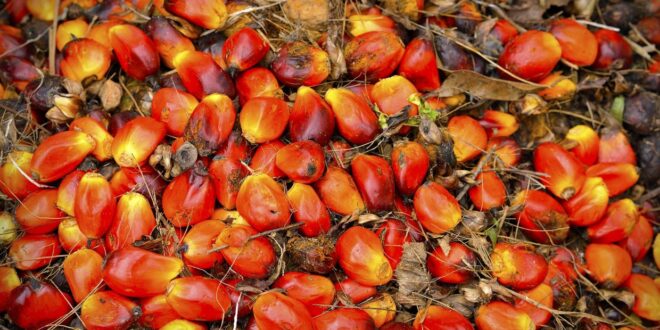KUALA LUMPUR: The world is facing a growing shortage of its most versatile edible oil. The solution may lie with emerging producers half a world away from South-East Asia’s vast palm oil plantations.
In Malaysia and Indonesia, which today account for the lion’s share of output, the ageing trees carpeting much of the region are becoming less productive.
Meanwhile, labourers are increasingly scarce and controls on land clearing have tightened, making it harder to replant.
It’s a different picture thousands of miles away for new planters in Colombia and Guatemala.
Here, some farmers churn out almost double the amount of oil per hectare compared with their South-East Asian peers.
In addition, to comply with looming European rules to ban imports of crops from newly deforested land, growers are already intensely focused on satellite and geo-location technology to ensure supply chains are fully traceable.
With elevated yields and the capacity to appeal to a wide customer base, free from deforestation concerns, Latin America is emerging as a new frontier for palm oil, increasing competition particularly in Europe.
Farmers in Latin America “have learned from mistakes made by Indonesia and Malaysia when it comes to deforestation,” said Khor Yu Leng, an economist at Segi Enam Advisors, a consultancy in Singapore.
“Short, simple, visible and low-emission supply chains should win in the long game.”
Palm oil exports from Central and South America are climbing. They jumped about 70% in the past decade, compared with an increase of just 14% in global shipments, according to US Department of Agriculture data.
This is a sharp rise even if exports from those regions still make up only 5% of the world total, compared with almost 90% from Indonesia and Malaysia.
Colombia is already the world’s fourth-largest producer and has “lots of room” to develop its 600,000 ha of plantations, according to Nicolás Pérez Marulanda, executive president of the National Federation of Oil Palm Growers known as Fedepalma.
The government has identified some five million ha that are highly suitable for palm without the need for deforestation, Pérez said. An expansion of that size would put the country on par with Malaysia in area.
Producers in Colombia are preparing to meet new requirements from the European deforestation rules, and both the country and Latin America have the opportunity to become reliable sources of sustainable palm oil for high-standard markets like Europe, Pérez said.
Meanwhile, farmers in Guatemala, the largest palm oil exporter in Latin America, are also seeing an increase in European demand because the country can show its production is free of deforestation through third-party satellite monitoring and sustainable certification, said Karen Rosales, former executive director of the Palm Grower Association of Guatemala.
“The problem is not palm oil itself, it’s the business model,” Rosales said. “You can produce palm oil very well or you can produce palm oil with a lot of environmental and social impacts.”
The edible oil is Guatemala’s third-biggest export, after textiles and coffee, Rosales said.
The Central American country ships 80% of the oil it produces and its biggest market is Europe, with about 60% of the palm going there.
Indonesia and Malaysia also use satellites and drones to show traceability and prove sustainability and have certification systems in place.
Still, the challenges are far greater because of the vast size of plantations, and it has been an uphill struggle to ease European concerns over palm oil and deforestation.
Grower Oscar Emilio Molina Martinez in Guatemala flies regularly above his estates to gauge the health of the trees, which are among the most productive in the world.
He takes geo-positioned pictures and sends them to agronomists, who check for pest damage, or lack of water and fertilisers.
Unlike the mammoth plantations in Indonesia and Malaysia which stretch as far as the eye can see, most of the country’s estates are small clusters of 500 ha lying among a mosaic of banana, sugarcane and coffee fields.
The country entered the palm industry many decades after Indonesia and Malaysia, said Molina, president of Grupo MEME, part of a family-owned business that pioneered palm oil cultivation in the country in the 1980s.
“We started later. We’ve got more tools like satellites, we have sustainability and climate change commitments,” he said.
The national average for palm oil yields in Guatemala is 5.86 tonnes per ha, Rosales said.
The average in Colombia is 3.66 tonnes and it’s 3.27 tonnes on a global basis, according to Pérez.
Countries in Latin America “will continue to improve their yields,” said Julian McGill, an agricultural economist and managing director of consultancy Glenauk Economics.
“They’re really laser-like focused on that.” — Bloomberg
 BeritaKini.biz Berita Viral Terkini di Malaysia
BeritaKini.biz Berita Viral Terkini di Malaysia





